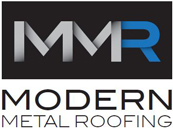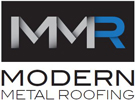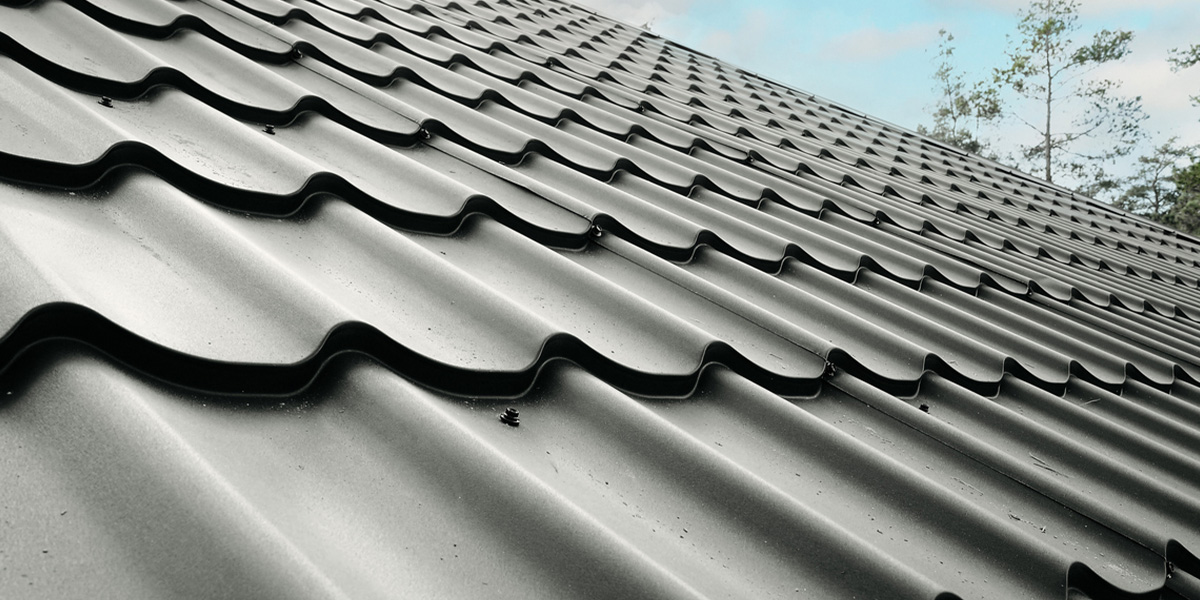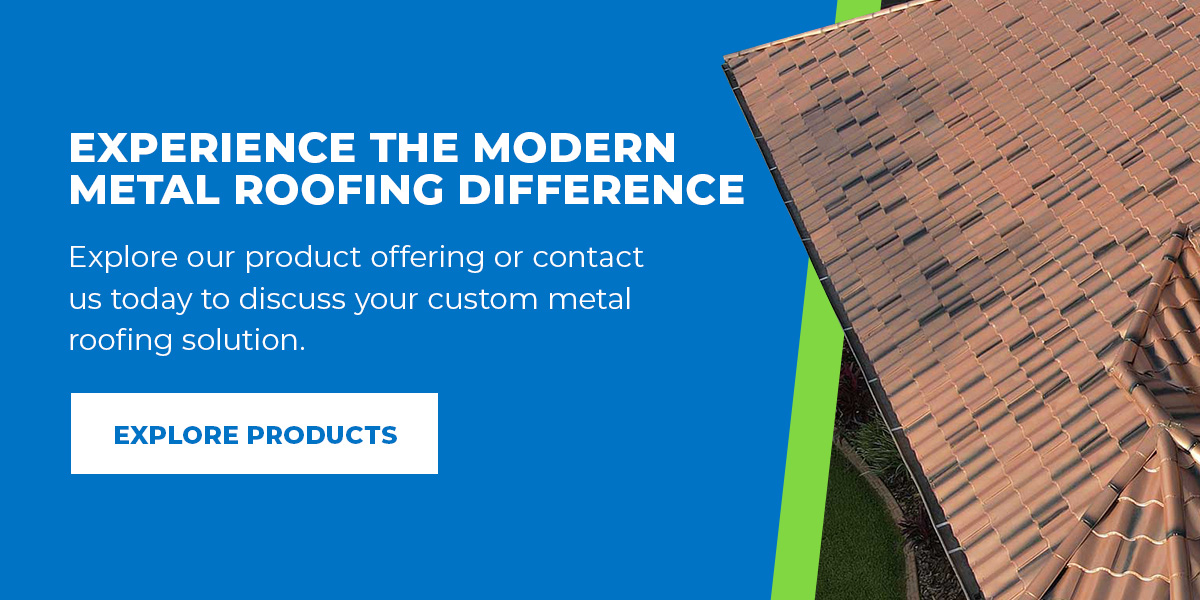Your roof defends your home, providing shelter and protection against the elements. Choosing a roofing material is an important decision. The right roof insulates your space, lowers energy bills and boosts property value. While some roofs can save you a few bucks, you may have to deal with maintenance headaches or frequent replacements. Residential metal roofing stands out as a home hero. It offers homeowners a versatile roofing option that balances strength with style.
Why choose metal roofing? Some benefits include durability, versatility, energy efficiency and weather resistance. Let’s explore the top reasons to choose metal roofing for your home.
1. Long-Lasting Roof Option
Metal is one of the most durable roofing options on the market. Unlike asphalt shingles, which may need replacement every 12 to 20 years, metal roofs can last 50 years or more. This remarkable life span is due to the rigid materials used. Many metal roofing systems use steel or aluminum. These metals resist extreme weather, shrinking, erosion and cracking, which affects conventional shingles.
Metal roofing’s ability to withstand extreme weather conditions is key to its durability. These roofs can endure heavy rain, snow, hail and high winds. They also resist thermal expansion or contraction that can damage other roofing materials.
Many metal roofing systems have warranties ranging from 30 to 50 years. Metal roofs can maintain their integrity and appearance for decades with minimal maintenance. Combining strength, environmental resistance and low upkeep makes metal a long-lasting roof option.
2. Energy-Efficient Roofing
Here are some energy efficiency benefits of installing a metal roof on your house:
- Reflects solar radiation: Metal roofs reflect solar radiant heat. This reflection reduces costs in warmer climates by keeping interiors cooler.
- Saves energy: By lowering the need for AC, homeowners can save on energy bills. A metal roof can reduce your energy bills by 10% to 40%.
- Uses cool-roof coatings: Different finishes increase the energy efficiency of a metal roof. Cool-roof coatings have pigments that increase solar reflection for enhanced cooling.
- Less replacements: Metal roofing’s extended life span decreases the need for replacement. Fewer replacements mean less resource waste and energy used in manufacturing.
- Integrates with solar: You can add solar panels to your metal roofing for extra energy efficiency. The roof’s service life is longer than a solar system’s, so you can install it on an existing roof.
3. Easy Maintenance
One of the top benefits of installing a metal roof on your house is its low maintenance needs. Metal roofing for homes is tough enough to handle the elements and requires little upkeep. Materials like asphalt shingles can crack, curl or become dislodged. Metal roofs look after themselves, sparing you the headache of regular inspections. Their rugged construction minimizes the need for repairs, saving you time and money.
Cleaning a metal roof is simple. A mild soap solution, sponge and pressure washer or hose do the trick to remove debris. Metal is fungi-resistant, so you don’t have to worry about moss or algae growth. Other elements, like wood shake, may need regular treatments to prevent rot or insect damage. Protective finishes on metal roofing enhance its rust resistance, fading and corrosion.
4. Weather Resistance
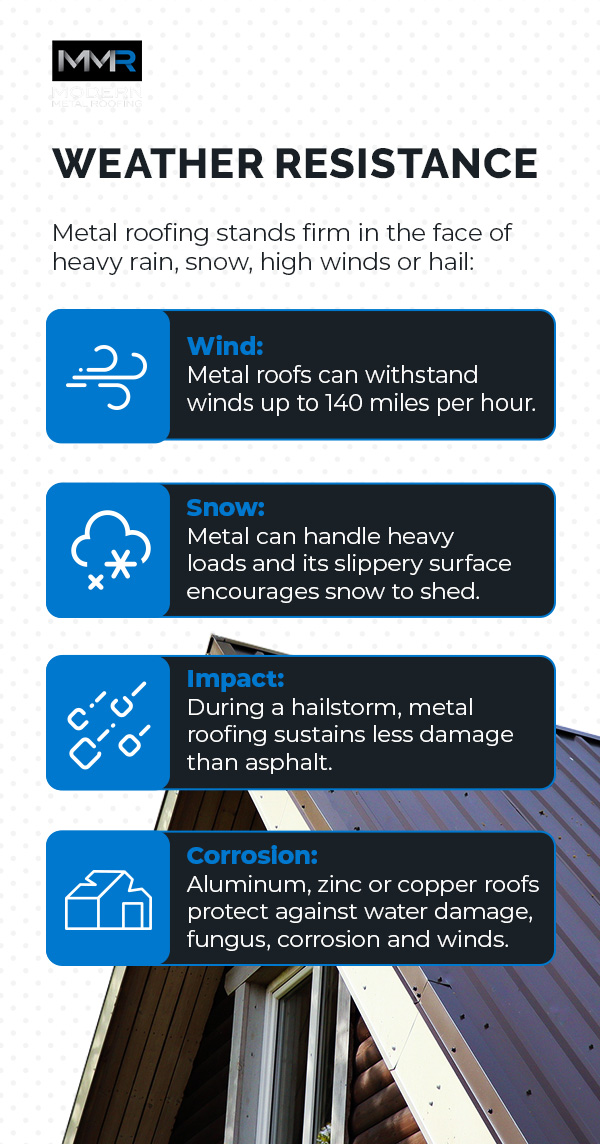
The best roofing materials protect your home from extreme weather conditions. Metal roofing stands firm in the face of heavy rain, snow, high winds or hail:
- Wind: Traditional roofing materials can tear off during hurricanes, tornados or storms. Compromised roofing exposes homes to waste damage. Metal roofs can withstand winds up to 140 miles per hour, keeping your home safe during harsh weather.
- Snow: The weight of ice and snow buildup can compromise the integrity of some roof systems. Metal can handle heavy loads and its slippery surface encourages snow to shed. You can install snow guards to stop ice or snow from harming anyone below.
- Impact: One reason why metal roofs are better than shingles is their superior impact resistance. During a hailstorm, metal roofing sustains less damage than asphalt. Many metal roofs have a Class 4 hail and wind rating. This top rating means these roofs can handle hail or falling objects without puncturing.
- Corrosion: Coastal climates can be temperamental. Aluminum, zinc or copper roofs protect against water damage, fungus, corrosion and winds.
Metal roofing performs well in all climates. Whether you live in a snowy wonderland or a hot coastal town, metal helps to keep your interior comfortable.
5. Eco-Friendly Roofing Material
Metal is ideal for environmentally conscious homeowners who want sustainable roofing solutions. Most metal roofs consist of a minimum of 25% recycled material. Metal is also 100% recyclable, making it an eco-friendly roofing material.
A comparison between metal roofs vs. traditional shingles shows a difference in sustainability. Asphalt contains harmful crude oil. Their shorter life span means more frequent replacements — around 20 billion pounds of asphalt end up in landfills each year. Using recycled materials for metal roofs reduces the amount of raw materials needed.
6. Design Versatility
Many of the reasons for choosing metal roofing relate to its functionality. It has versatility and aesthetic appeal. Whether you want the sleek look of metal or a more traditional design, there’s a metal roofing style to match. Metal is a world-class mimic. It can imitate conventional materials like clay tiles or cedar wood shakes. You can enjoy all the metal roofing benefits with a classic appearance. Choose a standing seam roof for a modern metal style with a tough design to resist wind, snow or hail.
With a variety of colors and finishes, you can find a metal roof that enhances your home’s aesthetic. Colors range from greens to neutral browns. You can add some extra flair with HD/XL highlights, making panels appear dimensional. A smooth finish gives the roof a glossy shine, while powder coating has a more matte appearance.
7. Low-Slope Suitability
A roof’s pitch or slope refers to the angle at which it rises from the lowest to the highest point. Some homes have high (pitched) roofs, while others have low-slope (flat) roofing.
A low-slope roof has a shallow pitch, making installing some roofing materials challenging. Metal roof advantages for low-slope roofs include:
- Water shedding: Low-slope roofs may experience water pooling. The slippery surface of metal makes it harder for water to accumulate, reducing the risk of leaks.
- Mold resistance: Increased moisture can make low-slope roofs prone to fungi growth. Metal resists mold, mildew and algae, helping maintain the roof’s integrity.
- Installation flexibility: Manufacturers can tailor metal panels to the dimensions and slope of the roof.
- Style options: Homeowners with flat roofs often have fewer styles to choose from. The range of colors and finishes lets you personalize your low-slope option.
8. Lightweight Material
Metal roofing weighs less than clay, asphalt or concrete, which can strain your home’s structure. Before installing a clay or concrete roof, hire an engineer to ensure your house can support the weight. Home improvement with metal roofs is a breeze with quicker and simpler installation. It comes in panels, which makes it easier to work with than individual shingles.
9. Fire Resistance
In 2023, fires in the U.S. caused an estimated $23 billion worth of property damage. A fire-resistant roof protects your home from the devastating effects of wildfires. Metal roofs have a Class A fire rating.
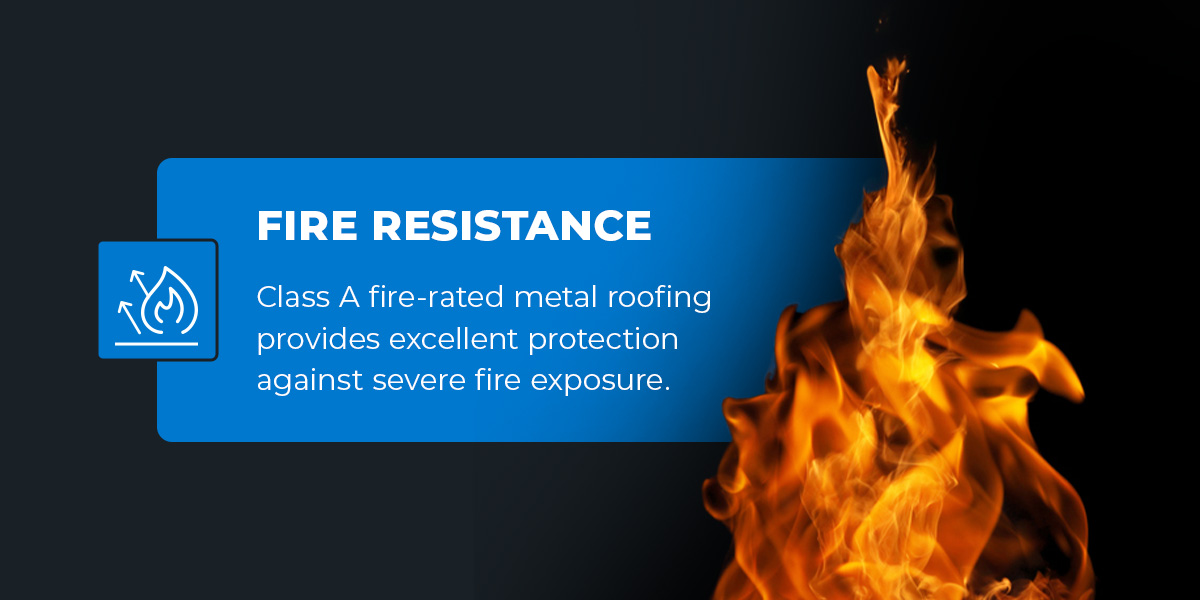
Roof coverings undergo strict testing by The American Society for Testing and Materials (ASTM International) and Underwriters Laboratories (UL). Class A fire-rated metal roofing provides excellent protection against severe fire exposure.
Metal roofing’s fire-resistant properties enhance the safety of your home. Some insurance companies may offer discounted premiums for a fire-resistant roof. Check with your insurance provider to see if your roof could save you money.
10. Long-Term Cost Savings
As a budget-savvy homeowner, you want to know how metal roofs save money in the long run. A roof is a significant investment, and metal is not the cheapest material on the market. Like any big-ticket item, you pay for quality. Luckily, these long-term metal roof cost savings more than justify the initial expense:
- Energy savings: An energy-efficient metal roof can extend the life of your AC unit. You also save money on energy bills and HVAC repairs or replacements.
- Decreased insurance premiums: Your metal roof could save you as much as 35% on home insurance!
- Lower maintenance costs: Metal roofs need minimal upkeep, saving maintenance expenses.
- Extended life span: Metal roofing’s long service life saves you money on frequent replacements.
- Increased property value: A stylish metal roof can increase your home’s curb appeal and add to its value. Potential buyers appreciate metal roofs for their energy efficiency, low maintenance and longevity. A house with a metal roof appeals more to budget-savvy homeowners than asphalt.
- Return on investment (ROI): The initial cost of a metal roof may be higher than that of some other materials, but you get a better ROI. You could recover 50% to 75% of your metal roofing cost. You also save on maintenance and repairs.
How to Choose a Metal Roof for Your Home
Are you ready to discover the benefits of installing a metal roof on your house? Choosing your dream roof takes careful thought. Here are some handy tips to guide you through the decision-making process.
Understand the Different Types of Metal Roofing
Metal roofing materials have different benefits that suit aesthetic or functional needs:
- Steel: This metal is the most popular for its durability and cost-effectiveness. Choose 24-gauge steel roofing for exceptional hail and wind resistance.
- Aluminum: If you live along a coast, aluminum can be favorable because it is lightweight and corrosion-resistant.
- Copper: While this material offers a unique aesthetic, it is more expensive.
- Zinc: Durable and environmentally friendly, with a long life span and natural patina.
Consider the Roof Style
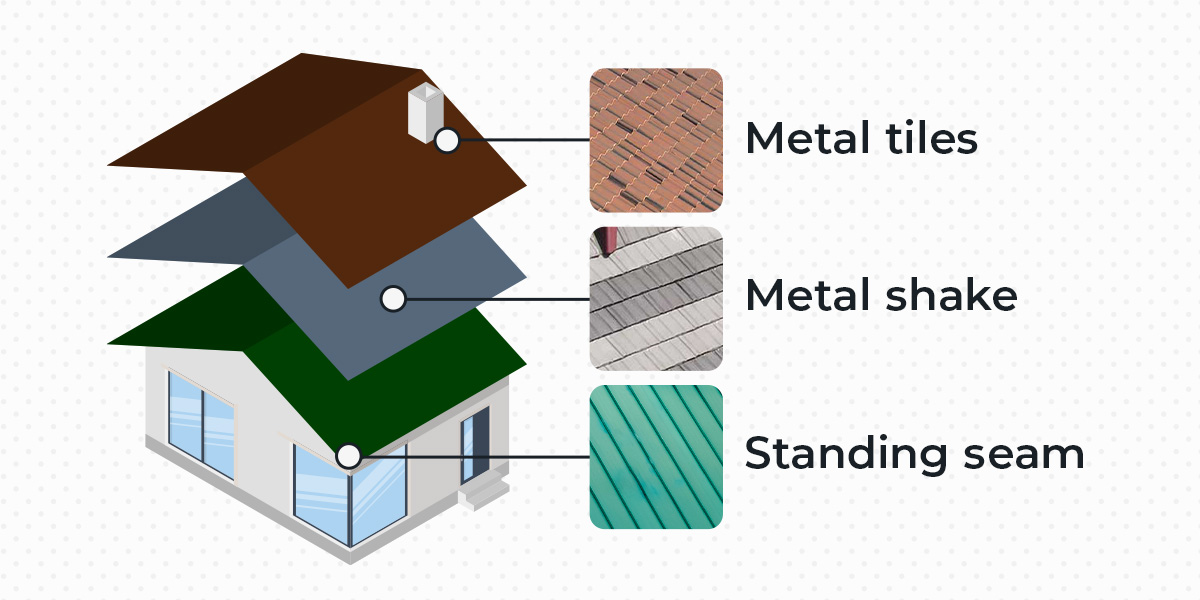
Metal roofs come in various styles, including those that mimic traditional materials:
- Metal tiles: These tiles imitate the timeless look of natural clay tiles at a fraction of the cost. If you like the Mediterranean feel of Spanish tiles without the upkeep, go for metal tiling.
- Metal shake: Cedar wood shake roofing has a rustic charm but needs plenty of care. Dimensional metal wood shake panels resist natural wood fungi, pests and rot, offering a durable alternative to wood.
- Standing seam: This roofing style combines classic and modern. Standing seam roofs come in various colors to elevate your home’s exterior.
Assess Durability and Life Span
When looking at metal roofing, it’s essential to consider its durability and life span. Check the gauge thicknesses — 24-gauge is a solid choice. Also, look for materials that resist corrosion and harsh weather. Remember to review the warranty. A longer warranty means the manufacturer trusts their product to last.
Evaluate Energy Efficiency
Reflective coatings help keep your home cooler by reflecting sunlight. This means lower energy bills, especially in hot climates. Consider the insulation properties. A well-insulated metal roof can cut your heating and cooling costs. Some metal roofs have an Energy Star rating, showing they meet strict energy efficiency guidelines.
Choose a Color and Finish
The climate you live in can affect your color choice. Darker colors absorb more solar energy and prevent heat loss, suiting colder areas. Lighter metal roofs reflect more solar radiation for a cooler building interior in hot climates.
Once you decide on light or dark, pick a color that blends with your home or a bright shade to make a bold statement. Finish it off with a glossy, smooth finish or a matte powder coating.
Calculate Your Budget
Working out your roofing budget involves a few steps:
- Calculate square footage: Suppliers charge per square foot, so you need to know the total square footage of your roof.
- Research materials: Browse for roofing materials comparisons and costs. You also need to determine labor costs for installation, which can vary by contractor.
- Include extras: Besides the metal roofing, you may need flashing, underlayment or ventilation.
- Add a contingency fund: Set aside money for unexpected costs. A little extra padding helps ensure you cover all expenses.
Consult With Roofing Experts
Experienced roof manufacturers can recommend the best metal roofing type for your home. They consider factors like climate, roof slope, weather concerns and your personal preferences. Make sure you choose a reputable supplier! A high-quality product will protect your home for decades to come.
Experience the Modern Metal Roofing Difference
Modern Metal Roofing manufactures premium metal roofing in the USA. We offer four exclusive styles that combine durability and value. Our 24-gauge steel panels provide superior impact resistance, while patented finishes ensure protection.
We commit to sustainability, using solar energy and producing 100% recyclable products. Our unique designs mimic traditional roofing styles, enhancing your home’s overall curb appeal. Explore our product offering or contact us today to discuss your custom metal roofing solution.
